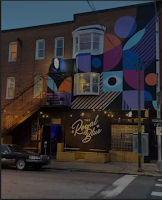Maryland Science Center
The Maryland Science Center is an interactive museum aimed towards kids and teaching scientific concepts. They were looking for people to help conceptualize and fabricate new exhibits, working with the in-house fabrication studio. I had a lot of experience with what
they wanted, particularly robotics, coding, installations, and 3D modeling, and I love science and science education. I applied via the internship faire.
 My direct supervisor was Jessica Ann, who was the head of Exhibit Fabrication. They ran the whole department, as well as outreach to other departments and managerial stuff.
My direct supervisor was Jessica Ann, who was the head of Exhibit Fabrication. They ran the whole department, as well as outreach to other departments and managerial stuff.
When I arrived, a new exhibit had just been completed. So, I ended up doing a lot of fixing and developing on prototypes. My main task was completing these “light wands,” a casing for handheld LEDs that could light up an exhibit. Since kids would be tugging and pulling on the cables, durability was essential. I went through 4 iterations over the course of the summer, researching LEDs and cables, learning Solidworks and CNC software to build them, and in the end repurposing existing exhibit parts and learning from others to build what I think is the best part I could have made.
I completed it! I definitely spent time on these. Just building one took hours, and designing and developing seemed to take forever. In the end, when I installed the final versions, it was like seeing my babies go to college, ready to take on the kids’ hands of life. I was really able to see a quality project through, and I’m really proud of that, and grateful to my supervisor for allowing me the time and space to have that.
I learned a lot during the summer. First, if something goes wrong, it’s expected, and just to keep rolling. I did a lot of that. But second, the most valuable skill was building-sense: good things take time, especially if one is building something physically (I’m used to working digitally). Honestly, I’m a little used to rushing, so that was a good one to learn. Also, career-wise, if I get a job in 3D modeling, as i’ll be able to conceptualize the translation between digital 3D space and an actual 3D part way, way better.
I also learned a lot in the way of skills: I feel proficient in Solidworks and other software useful for the CNC router carving process. I also learned how to work with wood. That was the one thing I was pretty shaky on going in, and even if it wasn’t what I aimed to do with my expertise, I learned a lot. Building tightly, finishing and polishing, and using high quality parts are all things I was exposed to: all manner of bolts, collars, glue, polish, and other tools are now in my repertoire.




